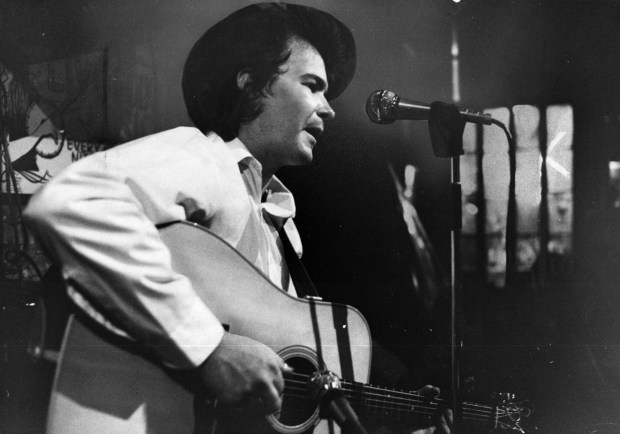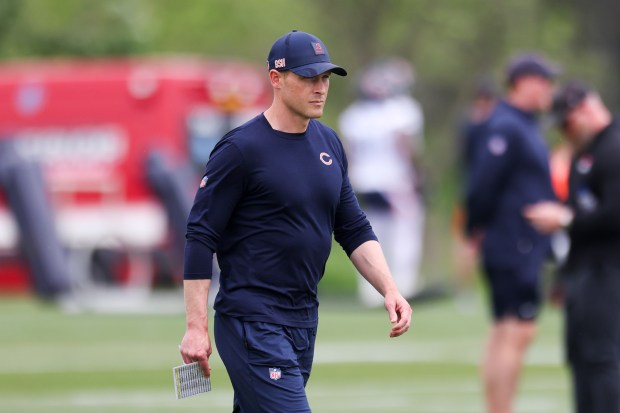A late March edition of Howard Stern’s radio show on SiriusXM featured the host and his guest, Bill Murray, talking about John Prine. Murray had known Prine in the good old days, and talked of sometimes walking from The Second City across Wells Street to listen to Prine on the small stage at the Earl of Old Town.
Stern obviously knew Prine’s music and expressed his affection for it, but admitted that he had only recently discovered it. He seemed amazed that Murray had actually known Prine and respectfully listened to his memories and his vocal accompaniment to such songs as “Hello in There” and “Angel from Montgomery.” (As a singer, Murray should stick to acting.) Emotions and sorrow were palpable even though Prine has been dead for nearly five years.
It was obvious from this short audio segment that people who knew Prine and his music remain tightly tied and that people new to both can be easily grabbed. Whatever your relationship, you should consider seeing the screening of a new film, “How Lucky Can One Man Get.”
It is a joyful film, capturing Prine during a 2010 concert at Proviso East High School in Maywood, Prine’s alma mater (class of 1964) and, between songs, hearing conversation peppered with stories of family, young love, working as a mailman and memories of vanished neighborhood hangouts of his deeply influential youthful years. That concert, just like one in 1999 and this event, was a fundraiser for the Maywood Fine Arts Association, headed by Lois Baumann, a classmate of Prine’s. The association provides arts instruction to the children of Maywood and surrounding communities.
The audience will surely contain some gray-haired former classmates of Prine’s. His widow, Fiona, and his musical director and guitarist Jason Wilber will be there too, in conversation with journalist Mark Guarino.
Mark Dvorak, the great teacher, writer and performer much in the Prine mold, will begin the evening by performing some of Prine’s music.
The movie features Prine’s three brothers, David (who died in 2023), Billy and Doug, and offers a short glimpse of the late Minnette Goodman, the delightful, diminutive mother of Prine’s great friend Steve Goodman, who died of leukemia in 1984 when he was only 36.
At its heart, of course, is the music that has long cast its spell, with Stern merely the latest to be bewitched and bedazzled. Among the first was the late film critic Roger Ebert, who walked one night into a club on Armitage Avenue called the Fifth Peg and saw Prine’s first public performance. He would write about it for the Sun-Times, “Prine’s lyrics work with poetic economy to sketch a character in just a few words.”
In short order, Prine and Goodman were “discovered” by Kris Kristofferson, who helped them get record deals, and they were on their way.
Bob Dylan, never one loose with praise, said, “Prine’s stuff is pure Proustian existentialism. Midwestern mind trips to the nth degree. And he writes beautiful songs. I remember when Kris Kristofferson first brought him on the scene. All that stuff about ‘Sam Stone’ the soldier junkie daddy and ‘Donald and Lydia,’ where people make love from 10 miles away. Nobody but Prine could write like that. If I had to pick one song of his, it might be ‘Lake Marie.’ I don’t remember what album that’s on.”
It’s on “Lost Dogs and Mixed Blessings,” Bob, one of Prine’s many albums. His first, 1971’s “John Prine,” remains my favorite, most of it written in an apartment on 19th Street in Melrose Park. It includes the songs “Sam Stone,” “Paradise,” “Hello in There” and “Angel From Montgomery,” which seemed to be impossible for a man as young as Prine was then to have written, so filled with emotional wisdom.
He did much of his later writing in Nashville, where he eventually moved for keeps in the 1980s. The city did such an energetic job of promoting its connection to him that many still think of Prine as a native son, knowing little of those formative years in Maywood.
Another person deeply affected by Prine has been Mike Leonard, the North Shore native and former longtime reporter for NBC’s “Today” show. He told me, “I can remember first hearing him, playing his records late at night and thinking that he was writing about everyday life, people like us.”
Leonard made a wonderful 30-minute documentary about Prine in 2016.
“I have been talking to a lot of kids, young people who seem to be afraid of being creative,” Leonard said then. “They think that being creative involves some kind of wild thinking, thinking outside the box. But I think Prine is a great example of the power of thinking inside the box.”
Or as Prine said, “For me it’s more like writing about what you know.”
Prine died in March 2020 due to complications from COVID-19. A river of praiseful words flowed. Dave Hoekstra, former Sun-Times writer, had his touching say on his blog. So did Guarino, then in the midst of finishing his remarkable book in which Prine played a large part, “Country and Midwestern: Chicago in the History of Country Music and the Folk Revival” (University of Chicago Press). He wrote that Prine used “plain-spoken language to peel back the mysteries of ordinariness. The key is understatement — minimal details and those generous spaces in the music and between the verses.”
That’s smart and I will file it away with all the other descriptions I have heard trying to explain what John Prine created, while continuing to think of it all as some kind of magic.
rkogan@chicagotribune.com
The event and screening for “How Lucky Can One Man Get” will be 7 p.m. April 9 at the Des Plaines Theatre, 1476 Miner St., Des Plaines; 224-354-2333 and desplainestheatre.com




